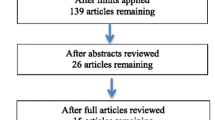Summary.
A clinically unstable hip in a new-born may be an early sign of congenital dysplasia. Unless followed and treated at a young age, it can progress to a degenerative hip joint disorder with considerable functional disability in adult life. For this reason, the early diagnosis of neonatal hip instability is crucial. We present our experience with 9199 neonates examined independently by clinical and ultrasonographic techniques. Instability was diagnosed in 0.8% of the hips. Only 47% of the unstable hips were diagnosed by the initial clinical examination, in the remainder the dysplasia was recognised only by sonography. Sonographic changes were also detected on re-examination in 6% of the unstable hips following the recognition of clinical instability. It is evident that combined clinical and ultrasonographic examination significantly improves the detection rate of dysplastic hips in new-borns.
Résumé.
Chez les nouveau-nés, une hanche cliniquement instable peut être un signe de dysplasie de la hanche. Si cette affection n’est pas traitée à un très jeune âge, elle peut devenir dégénérative et entraîner un handicap fonctionnel considérable à l’âge adulte. C’est pour cette raison que le diagnostic précoce de l’instabilité de la hanche chez le nouveau-né est cruciale. Notre expérience se base sur des examens cliniques et ultrasonographiques effectués indépendamment sur 9199 nouveau-nés. Dans 0,8% des cas, une instabilité de la hanche a été diagnostiquée. Cependant, seulement 47,4% des hanches instables on été diagnostiquées grâce à l’examen clinique initial. Dans le reste des cas, la pathologie a étéétablie après que l’anormalité ait été reconnue grâce à l’examen sonographique. Similairement, mais dans un moins grand nombre de cas, la pathologie a été détectée après un nouvel examen sonographique dans 5% des cas après que le diagnostic clinique d’instabilité ait étéétabli. Nous tenons à mettre l’accent sur le fait que les examens cliniques et sonographiques combinés ont sensiblement amélioré la détection des nouveaux-nés présentant un haut risque de développer une dysplasie de la hanche.
Similar content being viewed by others
Author information
Authors and Affiliations
Additional information
Accepted: 6 January 1998
Rights and permissions
About this article
Cite this article
Rosenberg, N., Bialik, V., Norman, D. et al. The importance of combined clinical and sonographic examination of instability of the neonatal hip. International Orthopaedics SICOT 22, 185–188 (1998). https://doi.org/10.1007/s002640050238
Issue Date:
DOI: https://doi.org/10.1007/s002640050238




